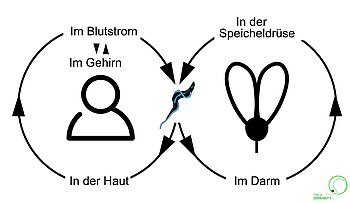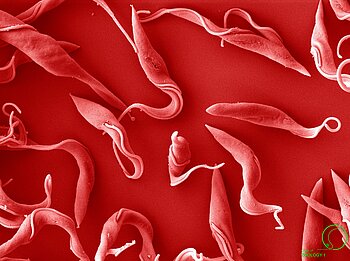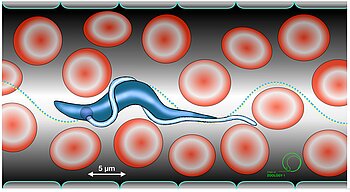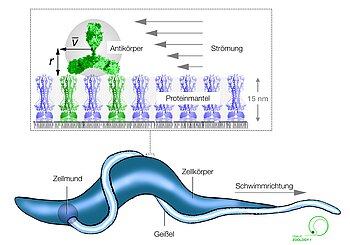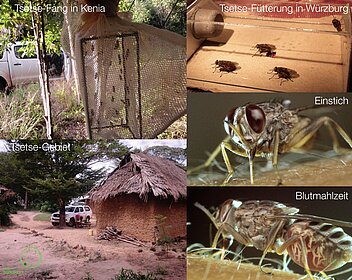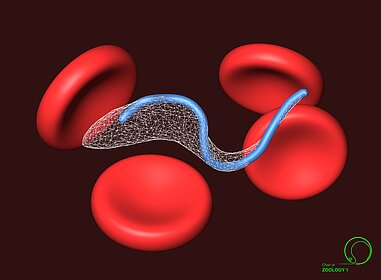Researching the Fascinating Biology of the Sleeping Sickness Pathogen in Würzburg
It has been known for over a hundred years that the number of sleeping sickness pathogens in the blood of an infected person fluctuates periodically. The patient shows symptomatic episodes of the disease. Today we know that the reason for the parasite waves is a brutally fought duel between parasite and immune system.
The trypanosomes form a dense protein coat on their surface, which consists of only one kind of protein. The immune system forms antibodies against the coat and eliminates the parasites (number drops). The parasite then changes its coat and the immune system has to start forming antibodies again (parasite number increases). The parasite can play this game indefinitely, because it has had hundreds of coats. It always wins.
Trypanosomes eat our antibodies
We have found out how trypanosomes additionally trick the immune system. The successful research began with the simple question of why the parasites actually swim in human blood. They do this constantly, without pause. But the single-celled organisms never reach speeds that would allow them to navigate purposefully - the blood flows much too fast. However, the parasites swim fast enough to take advantage of the current on their surface: Antibodies that have bound to their surface are pushed by the currents against the direction of swimming to the end of the cell. There they are taken up via the cell mouth. Figuratively speaking: The trypanosomes eat the antibodies that are supposed to kill them. An ingenious move.
Trypanosomes swim through the tsetse fly
Sleeping sickness is transmitted by the tsetse fly. After the parasites enter the bloodsucker with the blood meal, it takes about 3-4 weeks for them to complete their journey through the fly. Until now, it was unknown how the trypanosomes find their way. We have unravelled the mystery and used state-of-the-art methods to do so. We are the only laboratory in Germany that is allowed to breed tsetse flies. The parasites change cell shape and swimming style several times in the fly. We have studied the route of the trypanosomes from their entry into the fly and their journey through a veritable labyrinth in the fly's gut to the stinging proboscis. Today it is clear: the Achilles' heel of trypanosomes is incessant swimming. We are using this weak point to develop new drugs.
Contact & Links

Prof. Dr. Markus Engstler has held the Chair of Cell and Developmental Biology (Zoology I) at the Bio Centre in Würzburg since 2009. Previously, he was a professor in Darmstadt and Munich. In his research, he uses the pathogen of human African sleeping sickness, Trypanosoma brucei, as a model organism to explore fundamental questions of cell biology, genetics, biochemistry and biophysics. In addition, Markus Engstler studies livestock diseases produced by trypanosomes on site in Africa and has been campaigning for years for social awareness of neglected tropical diseases.


